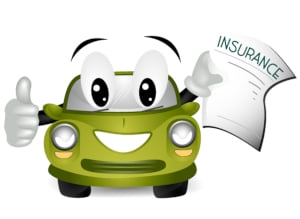Auto insurance is required in most states, but it’...
 You almost certainly have an auto insurance policy, but do you truly understand and comprehend all the terms and conditions? It is critical to comprehend automobile insurance definitions, terms, and language used so that you understand what you are purchasing, and that you have the right coverage for your individual circumstance.
You almost certainly have an auto insurance policy, but do you truly understand and comprehend all the terms and conditions? It is critical to comprehend automobile insurance definitions, terms, and language used so that you understand what you are purchasing, and that you have the right coverage for your individual circumstance.
We feel that auto insurance does not have to be so complicated. That is why we have put together a convenient, dictionary of phrases and words that you might come across in your insurance experience. That way, when it is time to discuss automobile insurance, you will be prepared.
An auto insurance policy is made up of five distinct parts: a declarations page, an insuring agreement, exclusions, conditions, and definitions.

Knowing and understanding what these terms mean will help you better understand what auto coverage you have and if you need to adjust your coverage. These are not listed in any specific order of importance.
Collision – When you are at fault, this extra coverage reimburses you for damage to your car caused by a direct or indirect collision with another vehicle or other object (e.g., a tree or object). While collision insurance does not cover mechanical failure, intentional acts or normal wear and tear, it does cover damage caused by potholes.
Comprehensive - Comprehensive auto insurance coverage protects you from theft and damage caused by events other than collisions, such as fire, theft, flood, vandalism, hail, falling rocks or trees, and other hazards.
At-fault accident - An accident that you partially or entirely cause. If you are involved in at-fault accident, your liability insurance covers other people's medical bills and property damage, as well as your legal defense costs if you are sued.
Accident Forgiveness Coverage - If you cause an accident, you will be forgiven completely and will not face huge premium rises because of your first at-fault accident. Another advantage is that any Good Driver discounts you have accrued will remain intact.
Combined Single Limit - Combined single limit (CSL) policies have a single amount for liability payment limits for both property damage and bodily injury. Unlike a split limit policy, which has separate limitations for bodily injury per person, bodily injury per accident, and property damage per accident, a single limit policy covers all three.
Liability Coverage - If you cause an accident, this covers the other party's medical bills, expenses, and property damage, as well as your legal defense costs if you are sued.
Exclusions - Things that are expressly excluded from coverage under the terms of a policy. Most motor insurance policies, for example, do not cover regular wear and tear, drag racing, or intentional conduct.
SR-22 Insurance - Some states demand an official document to confirm you have adequate automobile insurance. After significant or repeated traffic-related violations, such as DUIs or driving without insurance, the SR-22, which is submitted by your insurance provider, permits you to keep or reinstate your driving privileges.
Property Damage - The damage caused by you, or another driver driving your car, to another car, truck, vehicle, or other property, such as a fence, structure, or utility pole.
Policy Lapse - When one party fails to fulfill its duties within the time allotted, the right or privilege expires. Because insurers have concluded that drivers who retain continuous coverage are less likely to make an insurance claim than those who let a policy lapse, a lapse in vehicle insurance coverage may result in paying higher prices for a new policy.
Medical Payments/Personal Injury Protection (PIP) - This coverage pays for medical expenditures incurred by you (the owner) or your passengers because of an accident in which you or another driver was at fault. This insurance may also cover lost wages and other costs.
Uninsured Motorist Coverage - If you are hit by a driver who doesn't have insurance, or has insufficient insurance, your uninsured/underinsured motorist bodily injury (UMBI/UIMBI) coverage pays for the payment of your injuries or loss and those of your passengers, while your uninsured/underinsured motorist property damage (UMPD/UIMPD) coverage pays for the repair of your vehicle, if damaged.
Rental Reimbursement - Rental reimbursement coverage can cover you when your car is in the repair shop or otherwise not drivable due to a covered loss, by helping to pay for a rental vehicle while your automobile is being repaired. This is an add-on coverage that you can add to your policy to provide additional protection against the unexpected.
In most states, having auto insurance is compulsory by law. If you cause a traffic accident and are at fault, the auto liability coverage on your vehicles insurance policy helps pay for covered losses, such as the other party's medical costs and damage to their vehicle or other property. It also helps in the payment of legal bills if you are taken to court because of the accident.
Whether you live in a house, condo, or mobile home, and whether you drive a car, truck or motorcycle, Leap | Carpenter | Kemps Insurance Agency will get you the policies you need.
Auto insurance is required in most states, but it’...
No matter where you plan to travel, purchasing a t...
The majority of millennials are facing big debts, ...
Leap | Carpenter | Kemps Insurance Agency provides Commercial Business Insurance, Employee Benefits, Life and Health Insurance, and Personal Insurance to all of California, including Merced, Atwater, Los Banos, Mariposa, Madera, Fresno, Modesto, Turlock, and Stockton.
CA License Number 0646081 | Licensed to do business in California, Arizona, Hawaii, Idaho, Montana, Nevada, North Carolina, Oklahoma, Oregon, Virginia, West Virginia and Washington.
© Copyright 2023 Leap | Carpenter | Kemps Insurance Agency — Privacy Policy | Terms & Conditions.
Merced Office
3187 Collins Drive
Merced, CA 95348
Phone: (209) 384-0727
Additional Contacts
Toll Free: (800) 221-0864
Fax: (209) 384-0401